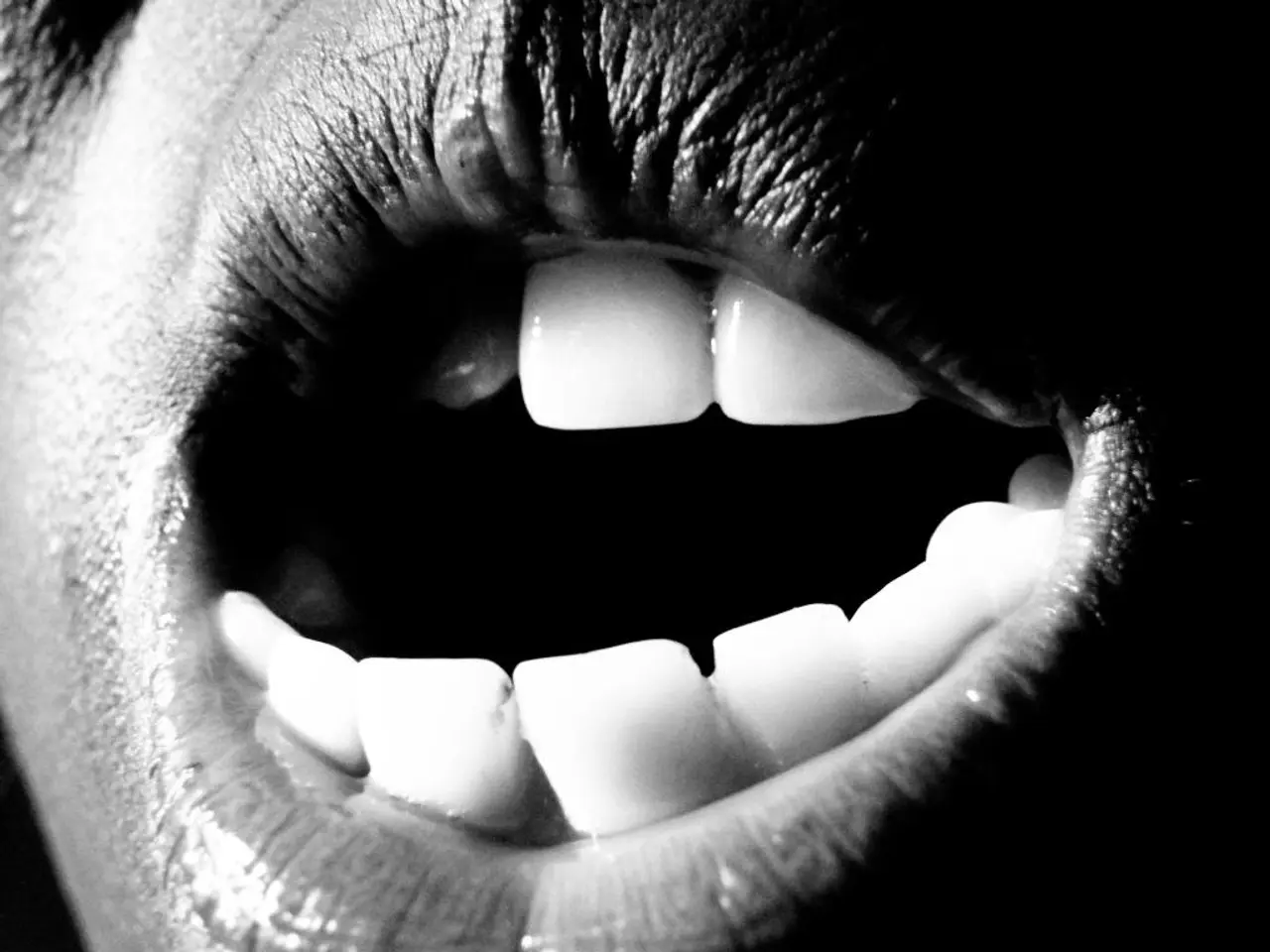Developmental Analysis of Primary Teeth: Understanding their Function and Importance in Dental Growth
Baby teeth, also known as primary teeth, play a crucial role in a child's life, serving as more than just temporary placeholders for permanent teeth. These teeth begin to erupt around six months of age and total 20, gradually being replaced by permanent teeth between the ages of 6 and 14.
Developmental Roles
Baby teeth guide the proper alignment and spacing for the larger permanent teeth that emerge later, preventing crowding or misalignment. Their presence is vital for the normal development of chewing functions adapted to growing dietary needs, with primary teeth having larger crowns and complex surfaces suited for breaking down food textures in early childhood. Moreover, they aid in forming clear speech patterns by working with the tongue and lips to produce sounds; missing or damaged baby teeth can cause speech difficulties.
Nutritional Roles
Baby teeth enable effective biting, tearing, and grinding of food necessary for a varied and nutritious diet in children, allowing proper intake of fruits, vegetables, and proteins. Pain or loss due to decay can make children avoid certain foods, potentially impacting nutrition during critical growth periods.
Social Roles
A healthy set of baby teeth supports a child's self-confidence and social development. Dental issues or missing teeth can cause self-consciousness, affecting participation in social and school settings. The development and care of baby teeth reflect overall health and growth stages, making them an important marker in childhood development.
In summary, baby teeth are essential not only as placeholders for permanent teeth but also for enabling proper nutrition, speech, and social confidence during early childhood growth and development. By fostering healthy habits and providing proper care, parents can ensure that baby teeth support their child's development and pave the way for a lifetime of good oral health.
The temporary nature of baby teeth reflects the stages of human growth and development. Baby teeth are smaller and less robust than permanent teeth because they are designed to fit the smaller jaws of infants and young children. The order of baby tooth loss generally mirrors the order of their eruption. The sequential eruption and replacement of teeth also minimize the risks associated with dental wear and damage.
Understanding the purpose and importance of baby teeth underscores the need for diligent oral care during early childhood. Symptoms of teething may include drooling, gum swelling, and a tendency to chew on objects. Baby teeth are more prone to decay and wear due to their thinner enamel and smaller size.
From an evolutionary standpoint, the development of deciduous teeth is a highly efficient strategy that supports survival and growth during early childhood. Early humans relied on baby teeth to process a variety of foods, from soft fruits to tougher meat, enabling them to obtain the nutrients needed for brain and body development. If humans were born with permanent teeth, they would be too large for an infant's jaw and would not align properly as the jaw grows.
The process of having two sets of teeth—deciduous and permanent—is an adaptation that supports the transition from infancy to adulthood. Proper care of baby teeth includes maintaining oral hygiene, regular dental visits, a balanced diet, preventing decay, and protecting teeth. Baby teeth begin to fall out around the age of six, a process known as exfoliation. By replacing these teeth with stronger permanent teeth, humans gain a more durable set of teeth suited for the demands of adult life.
- The nutritional roles of baby teeth are significant as they enable effective biting, tearing, and grinding of food necessary for a varied and nutritious diet in children, preventing potential issues during critical growth periods.
- From a health-and-wellness perspective, a healthy set of baby teeth supports a child's self-confidence and social development, minimizing self-consciousness that may arise from dental issues or missing teeth.
- The science behind the two sets of teeth—deciduous and permanent—is an example of evolutionary adaptation, allowing humans to survive and grow through the transition from infancy to adulthood, with proper care ensuring the longevity of both primary and permanent teeth.




